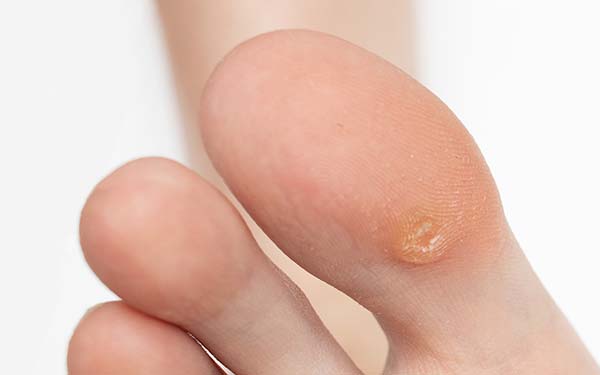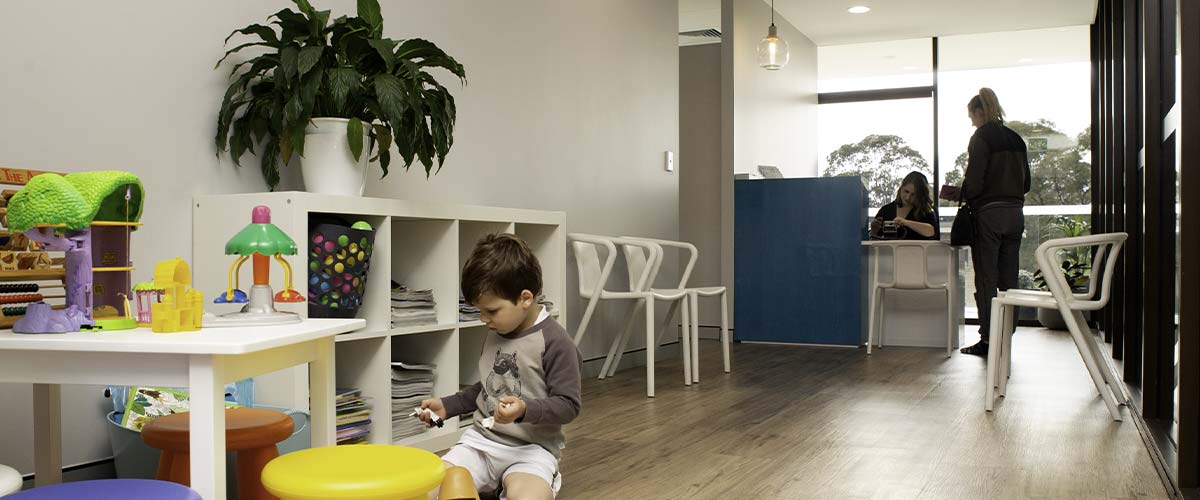Corns and callus

What is the difference between corns and callus?
Corns and callus are a thickening of skin that commonly occur on feet. They can quickly become uncomfortable or painful but fortunately they can be treated effectively by your podiatrist.
- Generally callus refers to a more diffuse thickening of the skin, more common on the ball of the foot. Pain from calluses is generally a mild discomfort.
- A corn is a deeper, more focused formation of hard skin, more common on the toes. Corns can give more severe pain when bearing weight. If pain persists while not bearing weight, this could mean that your corn is infected.
A corn can form under a callused area.
What causes corns and calluses?
Corns and callus occur as a result of pressure and friction on the skin of your foot. Your body responds to the pressure by growing more skin for protection. If the pressure on the skin continues, then the skin thickens to the point where it becomes painful.
Calluses and corns can indicate underlying biomechanical problems. Since they are caused by continuous pressure to one particular area, it may indicate abnormalities in your bone structure, joint range of motion or the way you walk.
Poorly fitting or inappropriate shoes often contribute to the development of corns and callus. Shoes that are too tight can apply high friction (rubbing) to the tops of toes and the sides of little toes.
Who gets corns and calluses?
Any feet can develop calluses or corns: young or old, sporty or sedentary. Some people have a natural predisposition to develop callus due to their skin type.
And as elderly people have less fatty tissue and elasticity in their feet, this lack of padding may mean calluses form at the bottom of their feet.
How do I prevent or manage corns and callus?
- Wear properly fitted shoes.
- Observe proper foot hygiene.
- Use emollients to keep the skin of your feet in good condition.
- Avoid using over-the-counter corn plasters, which can damage the healthy skin surrounding the corn.
- Follow the advice of your podiatrist.
How do our podiatrists diagnose corns and callus?
First we thoroughly examine your foot to identify the cause of the corn and/or callus. It’s also important that we eliminate the diagnosis of a verruca, a similar condition but with a very different cause and treatment plan.
How do our podiatrists treat corns and callus?
To treat corns and callus, our podiatrists debride the hard skin, a painless procedure which gives immediate relief.
However unless the cause of the corn or callus is addressed – that is, the excessive pressure on that area of your foot is relieved – your corn or callus may return.
Our treatment plan may also include:
- Regular maintenance to keep the corn and callus reduced.
- Use of padding to prevent the pressure.
- Advice on properly fitting footwear.
- The use of customised orthotics to relieve pressure under the foot.
- Surgical correction of any bony prominence that may be causing the high-pressure area.



